
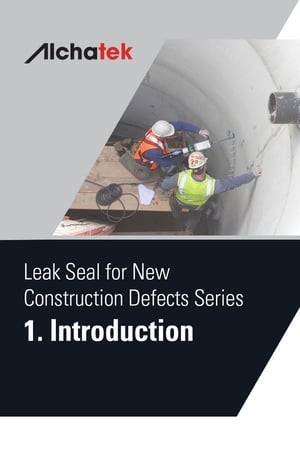 In the complex landscape of new construction, water intrusion stands as a formidable challenge, often leading to costly defects and prolonged maintenance issues. While waterproofing membranes play a crucial role in maintaining the integrity of the building envelope, there are other critical areas prone to leaks, such as pipe and conduit penetrations.
In the complex landscape of new construction, water intrusion stands as a formidable challenge, often leading to costly defects and prolonged maintenance issues. While waterproofing membranes play a crucial role in maintaining the integrity of the building envelope, there are other critical areas prone to leaks, such as pipe and conduit penetrations.
The Critical Role of Waterproofing Membranes
Waterproofing membrane systems are foundational to protecting new structures from water damage. These membranes act as a barrier, but exposure during construction can lead to inadvertent damage. Such damage compromises the membrane's effectiveness, leading to potential leaks and structural issues.
Exposed Membranes and Value Engineering
Exposed waterproofing membrane systems during construction are highly vulnerable. Physical damage can occur, especially during phases like backfilling, resulting in tears or punctures. Additionally, cost-saving approaches in the installation process, often referred to as 'value engineering', can result in the use of substandard materials or inadequate installation, further increasing the risk of water intrusion.
Challenges with Pipe and Conduit Penetrations
Another significant area of concern in new construction is the sealing of pipe and conduit penetrations. Often, these areas are not waterproofed sufficiently upon installation, creating potential points of failure for water intrusion. These penetrations, if not sealed correctly, can allow moisture to seep into pipes and conduits, leading to leaking pipes and damage to electrical wiring in conduits.
The Comprehensive Approach to Preventing Moisture Intrusion
To effectively combat the challenges of water intrusion, a comprehensive approach encompassing both the building envelope and pipe penetrations is crucial. This involves not only the meticulous installation of waterproofing membranes but also ensuring that areas like pipes and conduits are adequately sealed.
Polyurethane Leak Seal Grout: An Effective Solution
Polyurethane leak seal grouts offer a robust solution to address these challenges. Their flexibility and durability make them ideal for sealing cracks and gaps in both membrane systems and penetration points. These grouts react with water, creating a seal that prevents further moisture intrusion. By employing polyurethane leak seal grouts, contractors can significantly mitigate the risks of water damage, ensuring the longevity and safety of new structures.
Leak Seal for New Construction Defects
In conclusion, addressing water intrusion in new construction requires a multifaceted approach, focusing on both the building envelope and pipe penetrations. With the advanced technology of polyurethane leak seal grouts, contractors and developers can effectively tackle these challenges, ensuring the durability and integrity of new buildings.
Want more information on sealing leaks with polyurethane grout?



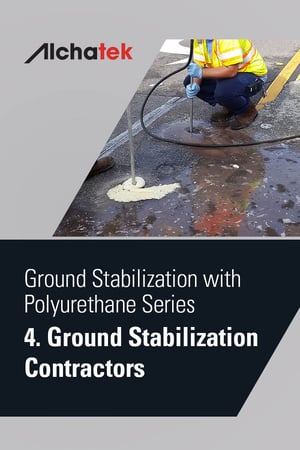 Choosing the right contractor for ground stabilization using polyurethane is a critical decision that directly impacts the success and longevity of your project. This guide provides essential tips to help you select the most qualified professional for your needs.
Choosing the right contractor for ground stabilization using polyurethane is a critical decision that directly impacts the success and longevity of your project. This guide provides essential tips to help you select the most qualified professional for your needs.


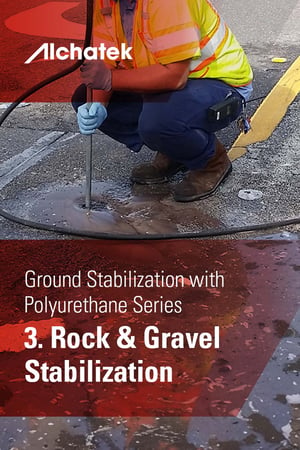 Ground stabilization extends beyond soil to include rock and gravel, crucial for various construction and infrastructure projects. Polyurethane foam, with its expansive and adhesive properties, is an extremely effective solution in these challenging environments.
Ground stabilization extends beyond soil to include rock and gravel, crucial for various construction and infrastructure projects. Polyurethane foam, with its expansive and adhesive properties, is an extremely effective solution in these challenging environments.
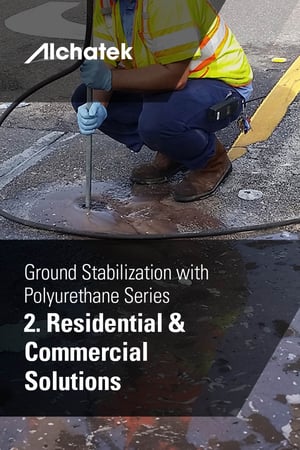 Polyurethane ground stabilization is a proven solution that has been successfully applied in countless real-world scenarios. From fixing residential driveways to supporting the foundations of commercial and municipal buildings, polyurethane foam offers a versatile and dependable approach to ground stabilization.
Polyurethane ground stabilization is a proven solution that has been successfully applied in countless real-world scenarios. From fixing residential driveways to supporting the foundations of commercial and municipal buildings, polyurethane foam offers a versatile and dependable approach to ground stabilization.
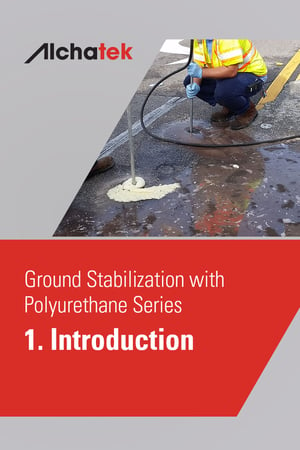 In the world of construction and infrastructure development, the quest for stability is paramount. Whether you're a property owner, manager, or builder, ensuring that the ground beneath your structures is solid and dependable is crucial.
In the world of construction and infrastructure development, the quest for stability is paramount. Whether you're a property owner, manager, or builder, ensuring that the ground beneath your structures is solid and dependable is crucial. 
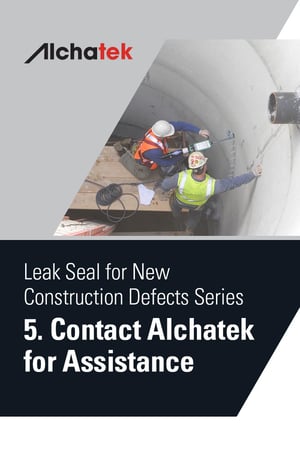 Taking proactive measures to stop early water intrusion issues that crop up during new construction projects is key to avoiding extensive damage and repairs later. Alchatek's leak prevention recommendations for new construction often utilize customized polyurethane sealants and barriers. These solutions provide maximum protection against water seepage through walls, floors, joints, entry points for utilities/conduits, and below-grade foundation surfaces.
Taking proactive measures to stop early water intrusion issues that crop up during new construction projects is key to avoiding extensive damage and repairs later. Alchatek's leak prevention recommendations for new construction often utilize customized polyurethane sealants and barriers. These solutions provide maximum protection against water seepage through walls, floors, joints, entry points for utilities/conduits, and below-grade foundation surfaces.


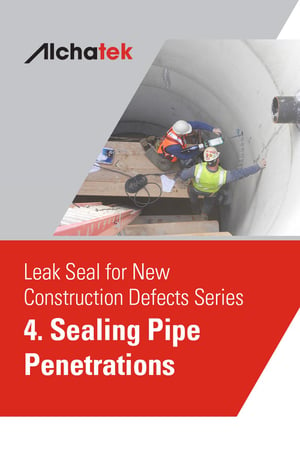 Pipe penetration sealing is a critical aspect of waterproofing in new construction, addressing the potential leaks that occur where pipes and conduits penetrate walls and floors. These penetration points are often the weakest links in a building's defense against water intrusion, particularly in areas subjected to high moisture or water pressure.
Pipe penetration sealing is a critical aspect of waterproofing in new construction, addressing the potential leaks that occur where pipes and conduits penetrate walls and floors. These penetration points are often the weakest links in a building's defense against water intrusion, particularly in areas subjected to high moisture or water pressure.
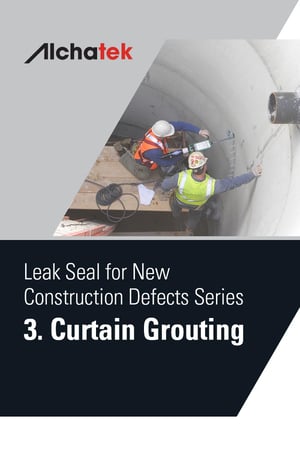 Curtain grouting is primarily employed to address multiple leaks at once. This technique originated in the 1960s. It was initially used to remedy water intrusion issues in sewer systems. Over time, its application expanded to a wide range of structures, driven by its efficacy in creating a barrier against water penetration. Curtain grouting involves injecting an expansive polyurethane grout through a wall or floor, into the soil on the other side. The grout then spreads out and expands, forming a 'curtain' that seals many leaks and cracks at once.
Curtain grouting is primarily employed to address multiple leaks at once. This technique originated in the 1960s. It was initially used to remedy water intrusion issues in sewer systems. Over time, its application expanded to a wide range of structures, driven by its efficacy in creating a barrier against water penetration. Curtain grouting involves injecting an expansive polyurethane grout through a wall or floor, into the soil on the other side. The grout then spreads out and expands, forming a 'curtain' that seals many leaks and cracks at once.
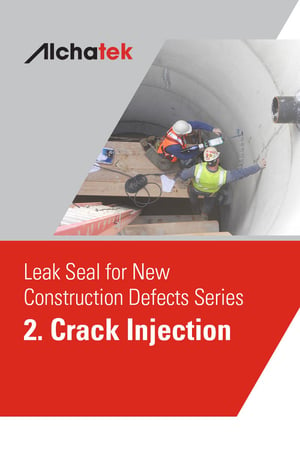 Water intrusion in new construction, a significant issue, often leads to costly defects. Crucial to this challenge are waterproofing membranes, which can be damaged during construction or compromised by cost-cutting measures. Similarly, inadequately sealed pipe and conduit penetrations can lead to leaks and electrical damage. A comprehensive approach, including proper installation of waterproofing and sealing penetrations, is vital. Polyurethane leak seal grouts are a key solution, effectively sealing against moisture intrusion and ensuring the durability of new buildings. This approach is essential for maintaining the integrity of construction projects against water damage. Crack injection with polyurethane grout is often employed in specific circumstances.
Water intrusion in new construction, a significant issue, often leads to costly defects. Crucial to this challenge are waterproofing membranes, which can be damaged during construction or compromised by cost-cutting measures. Similarly, inadequately sealed pipe and conduit penetrations can lead to leaks and electrical damage. A comprehensive approach, including proper installation of waterproofing and sealing penetrations, is vital. Polyurethane leak seal grouts are a key solution, effectively sealing against moisture intrusion and ensuring the durability of new buildings. This approach is essential for maintaining the integrity of construction projects against water damage. Crack injection with polyurethane grout is often employed in specific circumstances.
 In the complex landscape of new construction, water intrusion stands as a formidable challenge, often leading to costly defects and prolonged maintenance issues. While waterproofing membranes play a crucial role in maintaining the integrity of the building envelope, there are other critical areas prone to leaks, such as pipe and conduit penetrations.
In the complex landscape of new construction, water intrusion stands as a formidable challenge, often leading to costly defects and prolonged maintenance issues. While waterproofing membranes play a crucial role in maintaining the integrity of the building envelope, there are other critical areas prone to leaks, such as pipe and conduit penetrations.


